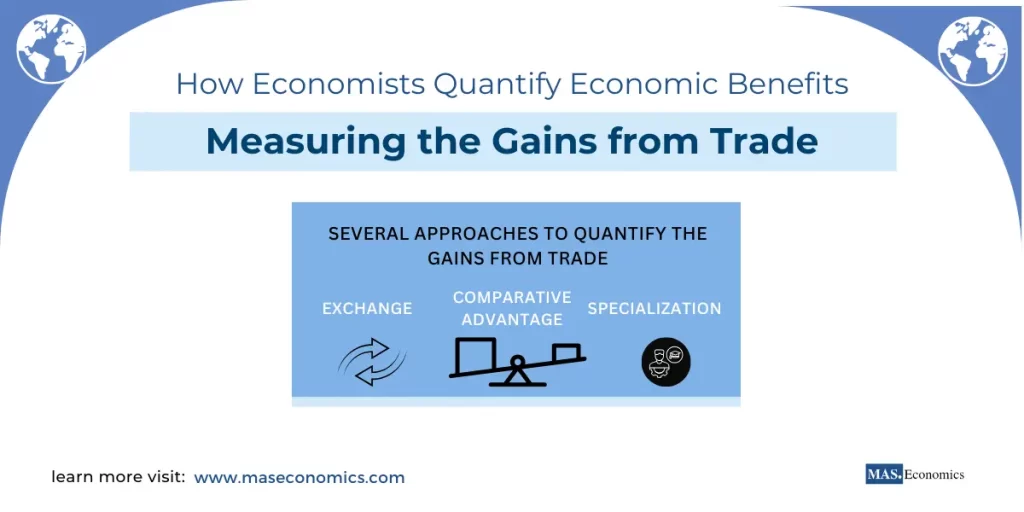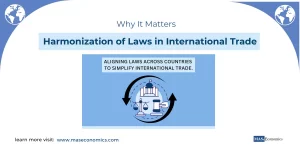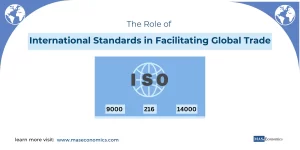Trade is the backbone of the global economy, providing access to goods, services, and resources across borders and enhancing well-being. But how do economists quantify the gains from international trade? How are the benefits of exchanging goods and services between countries determined?
Measuring the gains from trade involves methods such as consumer and producer surplus, terms of trade, and welfare gains. These metrics offer valuable insights into the positive economic impacts of trade, highlighting the real-world benefits of international commerce.
Gains from Trade: What Are They?
The concept of gains from trade refers to the net benefits that buyers and sellers experience from participating in market exchanges. In the context of international trade, these gains represent the improved welfare of both countries involved, driven by increased efficiency, specialization, and the opportunity to access goods and services not available domestically.
In simpler terms, gains from trade arise because of the differences between the demand price that consumers are willing to pay for a good and the supply price that producers are willing to accept. When trade takes place, both sides of the exchange benefit—buyers get the products they want at an affordable price, and sellers earn profits above their production costs. This phenomenon forms the foundation of why nations engage in international trade.
Methods of Measuring Gains from Trade
Economists have developed several approaches to quantify the gains from trade. These methods provide insights into how trade affects welfare, production efficiency, and national income. Let’s explore these in more detail.
Consumer and Producer Surplus
One of the most fundamental ways to measure the gains from trade is through consumer and producer surplus.
Consumer Surplus refers to the difference between what consumers are willing to pay for a good and the actual price they pay. It represents the additional welfare or benefits consumers receive from purchasing goods at a lower price than their maximum willingness to pay.
Producer Surplus is the difference between the price producers receive for a good and the minimum price they are willing to accept. It reflects the benefits to producers from selling at a higher price than their production cost.
In a typical market, consumer surplus and producer surplus are used to represent the benefits that both consumers and producers gain from economic exchanges. When a country opens up to trade, it allows consumers to access goods at lower prices than they might otherwise, while producers can sell to a larger market, often at better prices.
Let’s illustrate this concept without the need for a graph. Imagine Country A is exporting machinery to Country B. Consumers in Country B now have access to affordable, high-quality machinery compared to the costs of producing it domestically, leading to increased consumer surplus. On the other hand, producers in Country A can now export their machinery to a larger market, resulting in more sales and higher producer surplus. The sum of increased consumer and producer surpluses represents the total gains from trade.
Terms of Trade: Mill’s Approach
Another important concept in measuring gains from trade is the terms of trade. This idea, introduced by J.S. Mill, refers to the ratio at which goods are exchanged between two countries. Essentially, it describes how much of one good a country must exchange to obtain a unit of another good.
The terms of trade are favorable when a country can exchange fewer of its exports to obtain the imports it desires. For instance, if Country A exports one unit of steel in exchange for two units of coffee, then its terms of trade are quite favorable. The more advantageous the terms of trade for a country, the greater its gains from trade, since it receives more value in return for what it gives up.
The distribution of gains depends on the reciprocal demand of each country—the willingness and demand of each country for the other’s goods. If Country B demands Country A’s steel more than Country A needs Country B’s coffee, Country A can obtain a greater volume of coffee for each unit of steel exported, maximizing its gains.
Ricardo’s Comparative Advantage and Measuring Gains
Comparative advantage, as introduced by David Ricardo, offers another approach to measure gains from trade. In this context, the concept focuses on how countries can achieve greater total output by specializing in goods they can produce at a lower opportunity cost compared to others.
For example, let’s assume:
Country A can produce cotton more efficiently, whereas Country B can produce wheat more efficiently.
Without trade, both countries would need to produce both goods, but not efficiently.
By specializing—Country A focuses solely on cotton and Country B on wheat—both countries can trade their specialized goods. After specialization, both countries end up with a greater quantity of both goods compared to if they had produced both on their own. This increase in overall production and consumption represents the gains from trade.
Gains from Exchange and Specialization: Samuelson’s Approach
Paul Samuelson expanded on earlier theories by differentiating between gains from exchange and gains from specialization.
Gains from Exchange are the increased welfare countries achieve simply by trading the goods they have for goods they desire. Trade allows each country to consume beyond its capacity for producing goods domestically.
Gains from Specialization arise when countries focus on producing goods for which they have a comparative advantage. This focus results in more efficient production processes, increasing overall output.
Consider Country X, which produces electronics, and Country Y, which produces agricultural products. By trading, both Country X and Country Y can access a greater variety of goods at lower costs than if they attempted to produce everything domestically. The combination of exchange gains and specialization gains leads to an overall improvement in welfare and economic benefits for both countries.
Welfare Gains and Indifference Curves
Welfare gains provide another important perspective on measuring gains from trade. In economics, welfare gains are often illustrated using indifference curves, which represent combinations of goods that provide a country with equal satisfaction.
Even without visual representation, think of an indifference curve as describing the satisfaction level a country achieves based on its consumption of two goods—like wheat and machinery. When trade allows the country to access more of both goods, it can move to a higher level of consumption that would not have been possible in isolation. This movement to a higher level of welfare due to improved availability of goods represents the gains from trade.
For example, if Country X used to produce both food and clothing domestically, the availability of trade allows it to shift more production towards food (which it can produce efficiently) and then import clothing (which it does not produce as efficiently). As a result, Country X ends up with more of both food and clothing, leading to greater consumer satisfaction and hence welfare gains.
Real-World Example
To understand these concepts in practice, consider the real-world trade relationship between China and the United States.
China specializes in producing electronics, leveraging its labor and capital to produce efficiently and at scale.
The United States specializes in agricultural production, such as soybeans, using advanced technology and efficient farming practices.
When these two countries engage in trade:
China exports electronics to the U.S., allowing U.S. consumers to access electronics at lower prices, thereby increasing consumer surplus.
The U.S. exports agricultural products to China, increasing producer surplus for American farmers and providing affordable, high-quality food to Chinese consumers.
The specialization of each country in industries where they have comparative advantages means both countries can achieve more efficient production and increased welfare. In this scenario, the gains from trade are the result of consumer surplus from cheaper electronics in the U.S., producer surplus from exporting agricultural products, and increased variety and availability of goods in both countries.
Using Terms of Trade to Measure Gains
The terms of trade also offer insight into how gains are shared between nations. Returning to our example:
If China is able to trade one container of electronics for two containers of soybeans from the U.S., it benefits from advantageous terms of trade.
Conversely, if the U.S. is able to negotiate more electronics in exchange for the same amount of soybeans, its terms of trade improve, meaning a greater share of the gains from trade for the U.S..
The terms of trade ratio determine how gains are distributed and indicate the bargaining power of each country based on supply, demand, and resource availability.
Coefficient of Resource Utilization
Another interesting metric used to measure the gains from trade is the coefficient of resource utilization. Introduced by economists like Debreu, this method assigns a value to the efficiency of resource usage compared to what could be achieved through trade. If a country’s production resources are not being utilized effectively, the difference between domestic production and potential gains from trade highlights the inefficiency.
Conclusion
Measuring the gains from trade is fundamental to understanding why nations participate in international commerce—promoting production efficiency, better resource allocation, and greater economic welfare. Metrics like consumer and producer surplus, terms of trade, and welfare gains help quantify how trade enhances national prosperity.
Recognizing these gains enables countries to develop policies that support efficient production and mutually beneficial trade relationships. Whether through specialization or favorable exchange terms, measuring the gains from trade is key to appreciating the value of globalization and fostering sustained economic growth.
FAQs:
What are the gains from trade, and why are they important?
Gains from trade refer to the economic benefits countries achieve through the international exchange of goods and services. These benefits include improved resource allocation, increased efficiency, access to a variety of goods, and enhanced consumer and producer welfare.
How do economists measure the gains from trade?
Economists quantify gains from trade using methods like consumer and producer surplus, terms of trade, comparative advantage, and welfare gains, each capturing different aspects of economic benefits derived from trade.
What is the role of consumer and producer surplus in trade?
Consumer surplus represents the benefit consumers gain from accessing goods at lower prices through trade, while producer surplus reflects the additional profits producers earn by accessing larger or more lucrative markets.
How does comparative advantage explain trade benefits?
Comparative advantage highlights how countries benefit from specializing in goods they produce most efficiently and trading for others, leading to increased overall production and mutual gains.
What do terms of trade reveal about trade benefits?
Terms of trade measure the exchange rate between goods of trading countries, showing how favorably a country can trade its exports for imports. Better terms of trade indicate higher economic benefits for the country.
How does trade lead to welfare gains?
Welfare gains arise when trade allows countries to access more goods and services than they could produce domestically, improving consumption levels and overall economic satisfaction.
Why is measuring gains from trade crucial for policymakers?
Understanding trade gains helps policymakers craft effective trade agreements, optimize production strategies, and enhance national welfare by identifying areas for improved efficiency and better allocation of resources.
Thanks for reading! Share this with friends and spread the knowledge if you found it helpful.
Happy learning with MASEconomics




